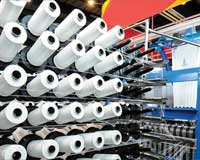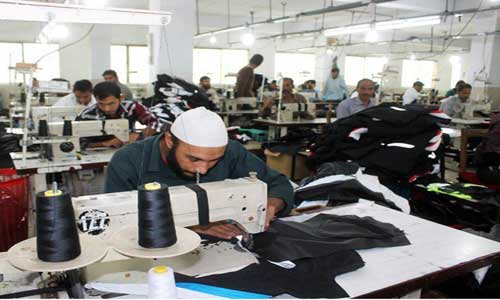"Marred with a number of challenges at global and national level, the textile industry in Pakistan is losing its sheen. The industry which used to contribute around 62 per cent towards exports, employing around 40 per cent of total industrial workforce, has been under tremendous stress. As per the Economic Survey of Pakistan, exports of the clothing sector, towels, knitwear, carpets and rugs showed a negative growth rate during 2016-17."

Marred with a number of challenges at global and national level, the textile industry in Pakistan is losing its sheen. The industry which used to contribute around 62 per cent towards exports, employing around 40 per cent of total industrial workforce, has been under tremendous stress. As per the Economic Survey of Pakistan, exports of the clothing sector, towels, knitwear, carpets and rugs showed a negative growth rate during 2016-17.

Exports from subsectors, including cotton yarn and cloth, hosiery, knitwear, bed wear, towel, ready-made garments and synthetic fabrics, are less than their potential. And the total potential for direct exports forgone per annum is $3,602 million. This is a huge loss not only for the textile sector but also for Pakistan as underutilisation would lead to unemployment and shutting down of factories. While Pakistan’s exports registered a negative growth rate of 10 per cent from $3.8 billion to $12.5 billion, countries like India, Bangladesh and Vietnam witnessed their exports growing by 31 per cent, 63 per cent and 107 per cent growth, respectively during 2011-16.
Cause for concern
Energy cost poses a great challenge for the textile sector as spinning, weaving and processing industries heavily rely upon energy consumption. Industrial gas tariff is 100 per cent higher and electricity tariff is almost 50 per cent higher as compared to other regional competitors. The industry is not receiving the desired push from the government as far as sales tax refunds are concerned, leading to financial crisis for exporters. Exchange rate overvaluation is another concern owing to which the exports are expensive in the global market. High level of indirect taxes is also increasing the financial burden for the businesses and making it difficult for them to keep their product price compatible at the international level.
Pakistan also lags behind technological upgradation and not enough investment has been made in technology therefore productive capacity remains stagnant. In 2006, Pakistan made $1 billion investment per annum whereas in 2016-17 this investment reduced to $0.56 billion. Owing to these challenges investors are wary about putting their money. On the contrary, countries like China, India and Bangladesh are providing extensive investment incentives to enhance investment and production activities.
Is there a ray of hope?
Looking at the plight of the industry, the government recently announced an export package, which industry hopes will help in its modernisation and development. The package contains new duty drawback rates on products, including processed fabric, textile and garments, yarn and grey fabric and made-up textile articles. It is required that the government implements the Prime Minister’s export led growth package which will generate millions of jobs and increase the exports.
To get competitive raw materials, exporters also need duty-free import of cotton. The country also needs to look beyond cotton fibre and find newer avenues of growth. The government must pay the pending sales tax refunds to the industry to ease its financial burden. Exchange rate should also be adjusted according to market conditions to avoid any uncertainty in policy measure.












